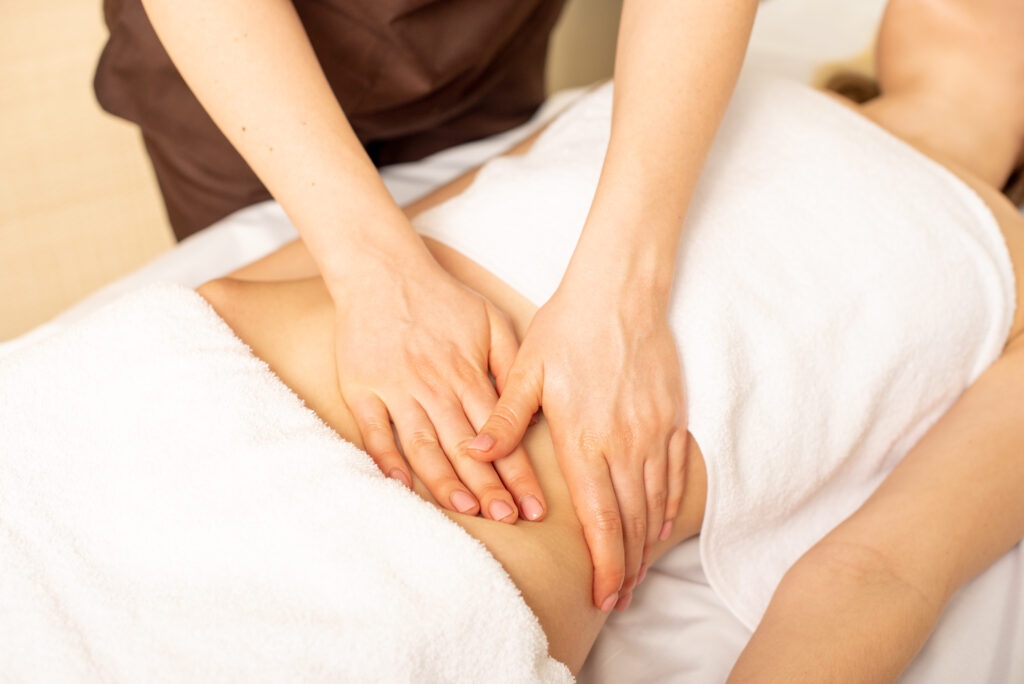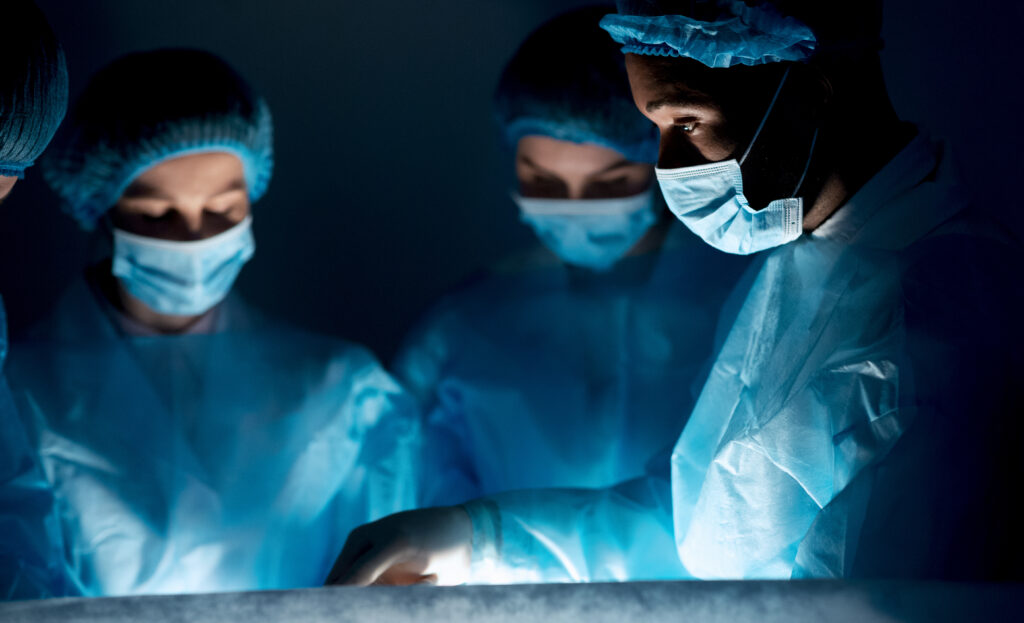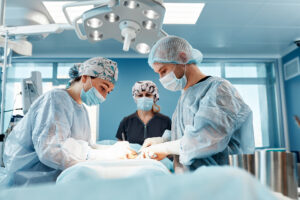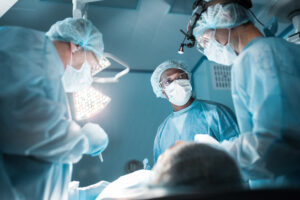Undergoing surgery is a significant step toward improving one’s health and well-being. Whether it’s a cosmetic procedure, a joint replacement, or a life-saving surgery, the recovery process can be challenging. One essential aspect of recovery that is often overlooked is the lymphatic system’s role in healing. Lymphatic drainage massage is a gentle and effective technique that can significantly aid in post-surgery recovery. In this comprehensive guide, we will explore the lymphatic system, its importance in recovery, and how lymphatic drainage massage can help facilitate the healing process.
Understanding the Lymphatic System
Before we look into the benefits of lymphatic drainage massage (LDM) for post-surgery recovery, it’s important to have a basic understanding of the lymphatic system.
-
What is the Lymphatic System?
The lymphatic system is a complex network of vessels, nodes, and organs that plays a critical role in maintaining the body’s fluid balance, immune function, and waste removal. It parallels the circulatory system but carries lymph instead of blood. Lymph is a clear fluid that contains white blood cells, proteins, and waste products. It originates as tissue fluid that bathes our cells, collecting cellular debris, toxins, and pathogens. This fluid is then transported through lymphatic vessels to lymph nodes, where it is filtered and cleansed.
-
Lymph Nodes
Lymph nodes are small, “bean-shaped” structures that act as filtration and immune system stations. They are found throughout the body and are connected by lymphatic vessels. Lymph nodes contain white blood cells called lymphocytes, which help the body fight infections and diseases. When your body is healing from surgery or an injury, these lymph nodes become even more critical in the recovery process.
-
Lymphatic Circulation
The lymphatic system operates in a one-way direction towards the heart. It works to return excess tissue fluid and waste back into the bloodstream. Unlike the circulatory system, the lymphatic system doesn’t have a pump like the heart. Instead, it relies on muscle contractions, breathing, and external factors such as massage to promote lymphatic circulation.
The Importance of the Lymphatic System in Post-Surgery Recovery
After surgery, the body experiences various responses, such as inflammation and swelling. These responses are natural reactions to tissue damage and the body’s way of initiating the healing process. However, excessive swelling and fluid buildup can hinder recovery and lead to complications.
The lymphatic system plays a crucial role in reducing post-surgical complications, such as:
- Edema: Edema is a condition where excess fluid accumulates in the tissues, causing swelling. Swelling can be uncomfortable, painful, and restrict movement. Lymphatic drainage massage can help reduce edema by promoting the removal of excess fluid and waste products.
- Scar Tissue Formation: Surgery often leads to scar tissue formation, which can affect the range of motion and lead to discomfort. Lymphatic drainage massage can help soften and reduce scar tissue, improving mobility and reducing pain.
- Infection Prevention: Lymph nodes play a significant role in the body’s immune response. A healthy lymphatic system helps combat infections more effectively, reducing the risk of post-surgical complications.
- Pain Management: Post-surgery pain is common. Lymphatic drainage massage can stimulate the body’s natural pain-relieving mechanisms by promoting the release of endorphins and reducing inflammation.
- Faster Healing: Lymphatic drainage massage accelerates the healing process by increasing blood and lymph flow to the surgical site. This can lead to shorter recovery times and reduced overall discomfort.
How It Works
Lymphatic drainage massage, often referred to as manual lymphatic drainage (MLD), is a specialized massage technique designed to stimulate the lymphatic system’s natural functions. It’s a gentle and rhythmic massage that targets lymph nodes and lymphatic vessels, promoting the flow of lymph throughout the body.
Here’s how lymphatic drainage massage works:

- Light, Rhythmic Movements: A trained therapist uses light, rhythmic, and specific hand movements to encourage the movement of lymphatic fluid. These movements follow the natural flow of the lymphatic system and are designed to avoid deep pressure or friction.
- Targeted Lymph Node Stimulation: The therapist focuses on specific lymph nodes and lymphatic pathways that are relevant to the surgery site or areas with excessive swelling.
- Promoting Fluid Movement: Lymphatic drainage massage promotes the movement of excess fluid, waste products, and cellular debris from the surgical site toward the lymph nodes for filtration and removal.
- Relaxation and Pain Reduction: The gentle massage strokes promote relaxation, reduce pain, and release endorphins, which are natural pain relievers.
- Reducing Swelling: By aiding in the removal of excess fluid, lymphatic drainage massage can help reduce swelling and edema.
Benefits of Lymphatic Drainage Massage for Post-Surgery Recovery
Now that we understand the process of lymphatic drainage massage, let’s explore the specific benefits it offers for post-surgery recovery:
-
Reduced Swelling and Edema
Swelling is a common post-surgery side effect, and excessive swelling can lead to discomfort and hinder recovery. Lymphatic drainage massage is highly effective in reducing swelling by promoting the drainage of excess fluid and waste products from the surgical site. By doing so, it can help you regain your mobility and reduce pain.
-
Enhanced Scar Healing
Surgery often leaves behind scars, and these scars can affect your range of motion and cause discomfort. Lymphatic drainage massage can help soften and reduce scar tissue, making it more pliable and less restrictive. This can lead to improved mobility and a more aesthetically pleasing scar.
-
Pain Relief
Post-surgery pain can be challenging to manage. Lymphatic drainage massage stimulates the release of endorphins, your body’s natural pain relievers, helping to reduce pain and discomfort. Additionally, by reducing swelling and inflammation, it can further alleviate pain.
-
Improved Immune Function
The lymphatic system is a key player in your body’s immune response. Lymphatic drainage massage supports the lymph nodes in their function, aiding in the body’s defense against infections and reducing the risk of post-surgical complications.
-
Quicker Recovery
By increasing lymphatic circulation and promoting the removal of waste products, lymphatic drainage massage can accelerate the healing process. This can lead to a faster recovery, reduced time spent in pain, and a quicker return to your daily activities.
-
Relaxation and Stress Reduction
Surgery can be stressful and anxiety-inducing. Lymphatic drainage massage provides a sense of relaxation and well-being, reducing stress and anxiety associated with the surgical experience. This mental and emotional support is an often overlooked aspect of post-surgery recovery.
-
Regulated Inflammatory Response
Inflammation is a necessary part of the healing process, but excessive inflammation can lead to complications. Lymphatic drainage massage helps regulate the body’s inflammatory response, ensuring it remains within a healthy range and doesn’t hinder recovery.
-
Enhanced Circulation
Lymphatic drainage massage not only supports the lymphatic system but also increases blood circulation to the surgical area. Improved blood flow delivers vital nutrients and oxygen to the tissues, aiding in the healing process.
-
Toxin Removal
The lymphatic system is responsible for removing waste products and toxins from the body. Lymphatic drainage massage helps this process, ensuring that your body effectively eliminates these substances.
When Should You Consider Lymphatic Drainage Massage?
Lymphatic drainage massage is a versatile therapy that can be beneficial in various post-surgery scenarios. You should consider this therapy if you are recovering from:
- Cosmetic Surgery: Procedures such as liposuction, breast augmentation, and facelifts often result in swelling and bruising. Lymphatic drainage massage can help reduce these side effects and improve the cosmetic outcome.
- Orthopedic Surgery: Joint replacement surgeries, like hip or knee replacements, can result in significant swelling and stiffness. Lymphatic drainage massage can enhance mobility and reduce discomfort.
- Cancer Surgery: Individuals recovering from cancer surgery, such as mastectomy or lymph node removal, can benefit from lymphatic drainage massage to manage swelling and support the immune system.
- Abdominal Surgery: Surgeries involving the abdomen, such as tummy tucks or hernia repairs, often result in swelling and discomfort. Lymphatic drainage massage can promote a quicker recovery.
- Dental Surgery: Oral surgeries can lead to facial swelling and pain. Lymphatic drainage massage can aid in reducing swelling and discomfort in these cases.
- Gynecological Surgery: Procedures like hysterectomy or ovarian surgery may lead to pelvic swelling and discomfort. Lymphatic drainage massage can be a valuable part of the recovery process.
It is important to find a qualified LDM therapist in your area, who is experienced in treating post-surgery patients. Theresa Gamlin is a certified lymphatic massage therapist who will customize the treatment according to your needs. If you have any questions surrounding this treatment, please contact Theresa Gamlin at the Bodhi Tree in the Still Space Center for Holistic Care in Mission Valley, the heart of San Diego.
Frequency of Sessions
The frequency of lymphatic drainage massage sessions depends on your surgery and individual needs. Typically, individuals may undergo several sessions over a week immediately following surgery. As the recovery progresses, the frequency may decrease. Your therapist and healthcare provider will work together to establish a suitable schedule for your recovery.
Precautions and Contraindications
While lymphatic drainage massage can be highly beneficial for post-surgery recovery, there are certain precautions and contraindications to be aware of:
- Open Wounds: Lymphatic drainage massage should not be performed on areas with open wounds, as it may risk infection or complications.
- Recent Infections: If you have an active infection or fever, it’s best to postpone lymphatic drainage massage until you’ve recovered.
- Deep Vein Thrombosis (DVT): If you have a history of DVT or are at risk, consult with your healthcare provider before getting a lymphatic drainage massage.
- Allergies or Skin Conditions: Inform your therapist about any allergies or skin conditions, as some massage lotions and oils may trigger reactions.
- Recent Surgery: For immediate post-surgery massage, it’s essential to have your surgeon’s approval and guidance on when it’s safe to start.
- Cancer Treatment: If you’re undergoing chemotherapy or radiation, or if you have advanced cancer, consult with your healthcare provider before considering lymphatic drainage massage.
Always consult with your healthcare provider and a trained therapist to ensure that lymphatic drainage massage is safe and appropriate for your specific situation.
Self-Care Tips for Lymphatic System Health
Lymphatic drainage massage is an effective way to support your lymphatic system during post-surgery recovery, but there are also lifestyle practices you can adopt to promote lymphatic health:
- Stay Hydrated: Proper hydration is crucial for maintaining lymphatic flow. Drink plenty of water to ensure your lymphatic system functions optimally.
- Exercise: Regular physical activity helps promote lymphatic circulation. Activities like walking, swimming, and yoga can be particularly beneficial.
- Deep Breathing: Deep diaphragmatic breathing can enhance lymphatic flow. Practice deep, slow breaths to support your lymphatic system.
- Compression Garments: In some cases, your healthcare provider may recommend compression garments to assist with swelling and lymphatic flow.
- Healthy Diet: A balanced diet rich in fruits, vegetables, and whole foods can support your overall health, including your lymphatic system.
- Skin Brushing: Dry brushing your skin can help stimulate the lymphatic system by promoting lymphatic fluid movement towards the lymph nodes.
Conclusion
Lymphatic drainage massage is a valuable and gentle therapy that can significantly aid in post-surgery recovery. By promoting the natural functions of the lymphatic system, it helps reduce swelling, alleviate pain, and accelerate healing. If you are considering lymphatic drainage massage as part of your post-surgery recovery plan, consult with your surgeon and a trained therapist to ensure it is a safe and effective option for your specific situation. With proper care and attention to your lymphatic system, you can experience a smoother and more comfortable journey toward recovery after surgery.












